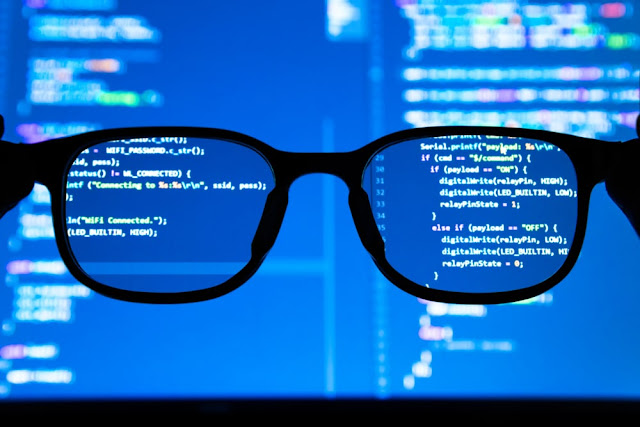The different about hiring data scientists in 2020

Tianhui Michael Li is the founder of The Data Incubator, an eight-week workshop to help PhDs and the conversion of postdocs from courses to industry. He previously held a data processing science at Foursquare and worked for Google, Andrewessen Horowitz, J.P. Morgan noD.E. Shaw.
Most posts posted by donor
Historically, the science of data hiring practices emerged from a software developer. A notable feature of software engineering negotiations is the awesome brain teaser, a puzzle such as "How many golf balls can a Boeing 747 have?" or "Use a faster algorithm program on the white board." Candidates will study for weeks or months on these and the Glassdoor recruitment website has a full section provided for them. In the science of data, a traditional brain toy has been incorporated into mathematical as well - "Why is it possible that the sum of two rows of dice came up in threes?" Over the years, this companies are beginning to realize that these brain tips are not working properly, and have begun to re-use them again.
Also Read :
Instead, firms focused on project-based data testing. This asks voters of data science to analyze real-world data provided by the company. Instead of getting one correct answer, project-based assessments are often complete, open-ended tests. Interviewers often submit code and record their results. This has many benefits, both in nature and in things.
First of all, the data testing environment is very sensible. Brain tips put people in the wrong place or force them to take code on a white board. Because responses to brain buyers are easily provided by Google, online services are limited. At work, you may be asked to be coded on a white board or to perform mental arithmetic with a person who examines you on your shoulder. It is unknown at this time what he will do after leaving the post. The data test also allows applicants to complete the test at a reasonable speed, using their preferred IDE or coding mode.
Sean Gerrish said "The challenges of going home is give you the opportunity to mimic how someone who is going to do a job will fit the truth rather than questions to discuss puzzles," said , engineering manager and author of "How Smart Machines Think."
Second, the importance of data testing also makes sense. By design, brainteasers are fake or experimental knowledge of well-known algorithms. In real life, one would not have to write these algorithms by hand (you can use one of the many freely available solutions online) and the problems they encounter at work are rarely deceptive in the same way. By providing voters with real data that they can work with and plan what is offered according to how results are shared with the company, data projects are more closely aligned with real job skills.
Jesse Anderson, deputy director of the field and author of "Team Data," is a big fan of data testing: "Beneficial setup. Examiners are given a chance to fight that mimics the real world. , which is the most important skill in the home-based COVID-19.
Finally, the work of a written technology project can help to avoid recruitment by emphasizing traditional but discriminatory aspects of the hiring process. It starts with Hispanic and American names that get less pronounced compared to the same as white words. In response, a minority of voters deliberately "cleaned up" their start of compensation. Conversations between people often depend on hearing the same problem. By emphasizing performance-oriented assessment, analysts can focus on their strengths in real-world studies, rather than relying on “biased” bias. Companies looking to embrace #BLM and #MeToo beyond hashtagging can look at how linking their hiring processes can lead to greater equality.
The exact type of data testing varies. In The Data Incubator, we found that more than 60% of firms offer home data testing. This best mimics the real work environment, allowing the chosen one to work from home (usually) within a few days. An additional 20% requires interview data projects, in which election representatives analyze data as part of the interview process. While the incumbents are subject to the pressure of time from this, and they do not feel pressured to work for failing the exam. "The challenges of going home take a lot of time," explains Field Cady, an information scientist and author of "The Science Science Handbook." "This is a huge student task and can be done incorrectly (for example) for people with family responsibilities who can spend many evenings on this challenge."
To reduce the number of custom data projects, smart nominees create their own portfolio projects to showcase their skills and companies are increasingly accepting them instead of customized work.
Companies that rely on classic brainteasers are a form of extinction. Of the 20% employed by employers who are still attached to brainteasers, most of them are large, very strong businesses accustomed to flexibility. They need to realize that the canceled recruitment process does not look trivial, making it difficult for passengers. At a recent conference, one of my colleagues who was a new data science employer explained that he had rejected opportunities based on the firm’s screening process.
How strong can a team be if the recruitment process is so far behind? This feeling was also widely shared by Ph.D.s graduates of The Data Incubator data science relationship. Companies that fail to accept the new reality are losing the battle for the top talent.
- In Google Chrome, Microsoft Edge errors leave billions open to attack
- How to get Windows 10 clipboard history to paste multiple items
- Billion Android phones could be vulnerable to 400 Achilles
- The apple is taking legal action against the developers of the "prepear" app due to its logo
- As humans who have read a major area of our brain we can ‘recycle’
- Microsoft only prevented Windows 10 users from removing its Google Chrome rival
- Microsoft Edge is making it harder to dig into browsers




![Oppenheimer 2023 Download in Hindi Filmywap [480p 720p 1080p] | Cillian Murphy Oppenheimer Download in Hindi](https://blogger.googleusercontent.com/img/b/R29vZ2xl/AVvXsEivuQ9GvdRiRJ2wFfSwrU_6UJjp3hHD47CM4O0BvRggdyzLgtND1gA4arnK2J-IFq0sIUIH-5kRhgkGpScmafe9QhglnZd_v2kJwbd7u8JNTwsbnzvUvGh7KSnhvWaduRU5YoXHO-epSL-MNcIvHNiIza8sfKhzu0JhXMi-lqgMFk7hAUK2tD8EqyYWn5if/w680/Oppenheimer.jpeg)



0 Comments
If you have any doubt, Please let me know.